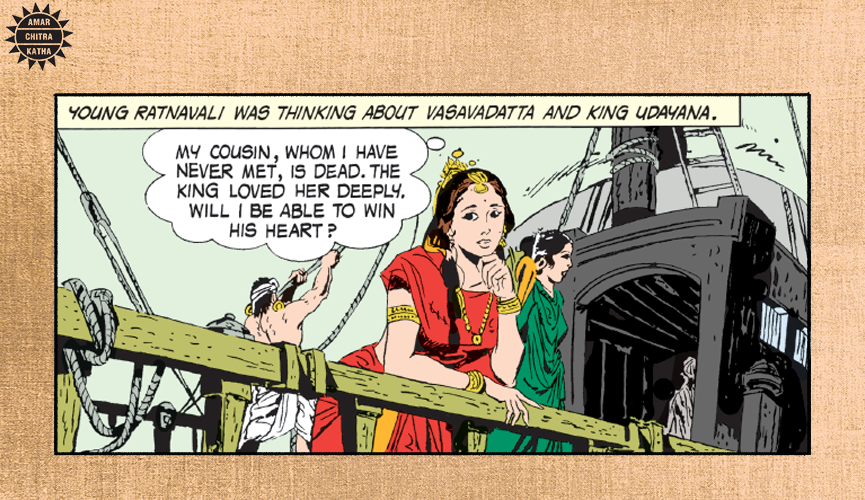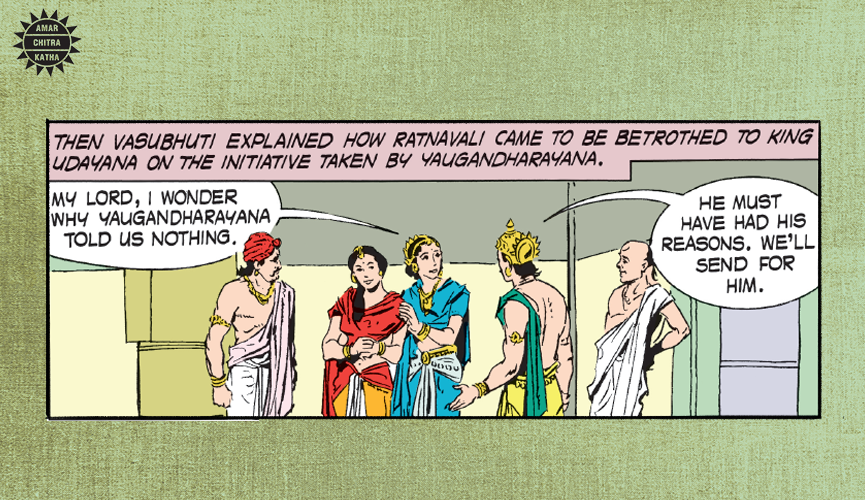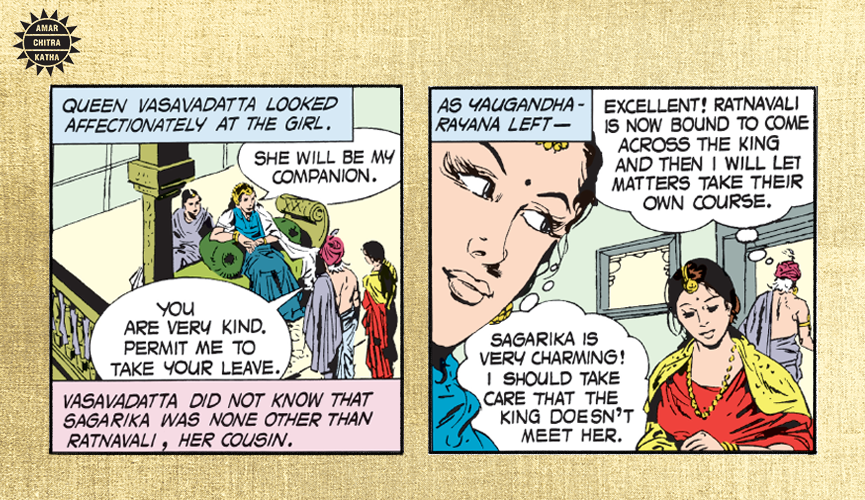Ratnavali
- April 4, 2023


Ratnavali
- April 4, 2023
By Srinidhi Murthy
Ratnavali is a Sanskrit drama about Princess Ratnavali of Simhala. The play has been credited as the work of a master playwright, the 7th-century poet-king Harshavardhana of Kanauj. It is the story of a young named princess Ratnavali, who gets shipwrecked on the way to her wedding and how she finds love in the end.
Princess Ratnavali was the daughter of Vikramabahu, the king of Simhala. Vikramabahu’s niece, Vasavadatta, was married to King Udayana of Kaushambi. When the king heard that his niece had died in a fire, he proposed a marriage between Ratnavali and Udayana, to keep the relationship between the two families alive. But unknown to him, Vasavadatta had not died. Rumours of her death had been spread by Udayana’s minister, Yaugandharayana, as he wanted Ratnavali and Udayana to get married. What happens to Ratnavali, Udayana and Vasavadatta, forms the crux of the story.
To receive more such stories in your Inbox & WhatsApp, Please share your Email and Mobile number.

Royal alliances
Royal marriages were among the most sought-after alliances between kingdoms in ancient times all over the world. In this story, King Vikramabahu’s niece, Vasavadatta, was married to King Udayana of Kaushambi. Through this marriage, Vikramabahu formed an alliance and friendship with Udayana. When Vikramabahu heard that his niece had died in a fire, he mourned for her. At the same time, he did not want to lose his relationship with Udayana. If Udayana decided to marry a princess from another kingdom, her father would be an ally of Udayana’s instead of Vikramabahu. Hence, he proposes a wedding between his daughter Ratnavali and Udayana, to keep the relationship between the two kingdoms alive.
Consequences of acting without approval

A loyal minister always thinks about the well-being of his king and kingdom. Hence, when a prophecy predicted that the union of Ratnavali and Udayana will bring prosperity to Udayana, Yaugandharayana, the king’s minister, worked hard on arranging the match. He told Vikramabahu that Vasavadatta had died and accepted the marriage proposal from Ratnavali without informing Udayana. Yaugandharayana’s intentions may have been good, but his one action caused mishaps and confusion, which may have permanently strained the relationship between the two kingdoms. In the end, due to his complete trust in his minister, Udayana called him and gave him a chance to explain. This highlights their relationship and indicates that the king understood Yaugandharayana’s good intentions. With the character of Yaugandharayana, the playwright shows the terrible consequences of acting on someone’s behalf without his knowledge or approval.
The insecurities of a queen

It is shown that Vasavadatta and Udayana loved and cared for each other. Yet, when Ratnavali was introduced to Vasavadatta as her new companion, the queen feared that Udayana may take a liking to her. Hence, she promised herself that she would never allow them to meet. This shows that queens, even though they ranked high, next only to the king in the court, constantly feared a change in their husband’s affections. When Vasavadatta sees Ratnavali and Udayana together, she becomes heartbroken and orders that Ratnavali should immediately be locked in her inner chambers, until further notice. Later, Vasavadatta learns that Ratnavali is her cousin and sympathizes with her for all the troubles she had to undergo. When it is revealed that Ratnavali would bring prosperity to her king and kingdom as per the royal prophecy, the queen lets go of her insecurities and requests Udayana to accept Ratnavali as his wife. Through Vasavadatta, the writer shows how a good queen sacrifices her happiness and insecurities for the greater good of her kingdom.
Adaptation
Ratnavali has been adapted thrice into Indian cinema. Movies with the same title were released in 1922, 1924, and 1945.
Subscribe to the ACK Comics app and read the entire story of Ratnavali and many other such classics!
To receive more such stories in your Inbox & WhatsApp, Please share your Email and Mobile number.

Comic of The Month
The Naval Journey of India Book I
This book is the first of a three-book series that takes a deep and detailed look at India's Naval History and a deep insight into the lives of our men and women in white. But any series on the Indian Navy has to start at the very beginning - exploring India's celebrated maritime history. Join our little hero, Bharat, and his grandfather, Commodore Sagar, as they sail into the deep blue waters of time. Book I of The Naval Journey of India takes a sweeping look at India's maritime endeavours, how the seas impacted us over millennia and how the oceans made us who we are.